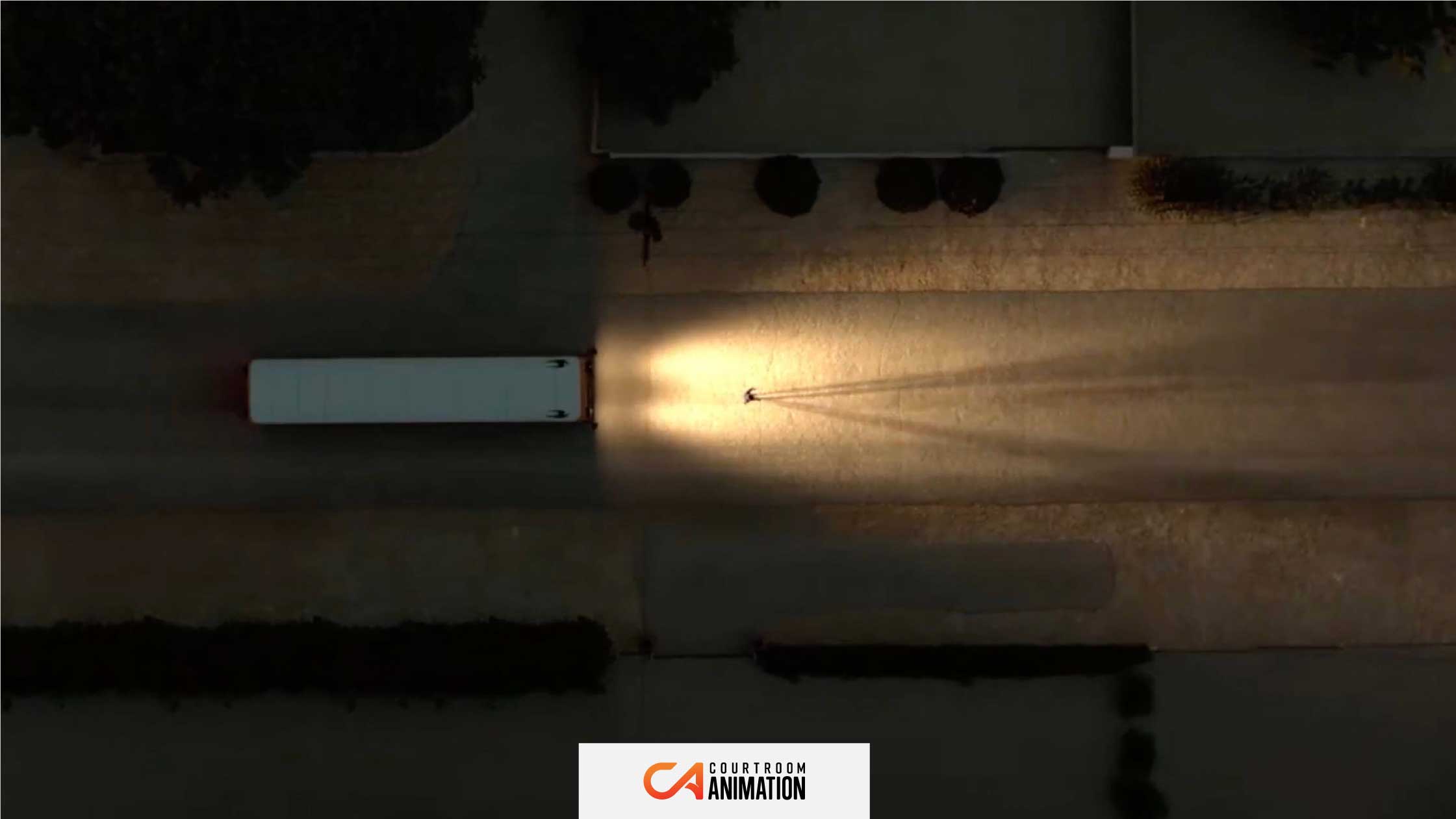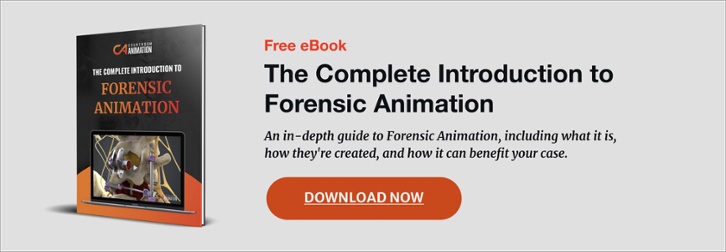
Have you ever tried to complete a handful of tasks at once? Your capacity to absorb information would be minimized if you were writing an email, listening to a coworker talk, and also trying to remember something.
This is also true for jurors during a courtroom presentation. Humans have a low threshold for multi-tasking, in fact only 2.5% of people can multitask effectively. This means that it’s likely the jurors for your case are not multi-taskers.
The jury listens to you or your expert witness’s presentation, processes visual stimuli, thinks about the case, and takes notes. Their focus is divided; when a person isn’t focused, they can’t fully retain information. This means a jury without law graphics is going to have a harder time remembering your argument.
Let’s dive into why attorneys who use courtroom visuals are more likely to help the jury remember the key facts of their case.
Why a Legal Video is Worth 1,000 Static Legal Graphics
As the saying goes, a picture is worth a thousand words, or in a civil case, one legal video is worth one thousand trial graphics. While legal graphics are proven to be compelling visual aids, a legal video is better at capturing attention.
In this short video by Johns Hopkins University, they created a memory game using motion and visuals. Their theory is that the human brain will create the strongest memories when you see an object change through space and time. This theory explains why the jury will have a better perception and memory of your argument than if you only provide an oral explanation.
Another well-known video is the famous awareness test created by Daniel Simons and Christopher Chabris. It captures how humans have selective attention when focusing on one thing. This means that the jury might only concentrate on one piece of information you state, while ignoring other valuable facts that come after it. This is why a legal video that you can pause and replay while you point out information when required has many benefits to the jury.
Want to learn more about how you can work with an animation team to create a compelling legal video? Download this free checklist!
A trial can become monotonous for the jury. A video they watch that expertly, and accurately, explains your case will improve their interest and retention. In addition, they are aesthetically pleasing while being completely scientifically accurate.
For example, this injury animation above would be hard for the attorney or expert witness to explain without visuals. The attorney could describe how the skier hit someone and caused a lumbar disc herniation. This explanation could be flawless, but if the jury took a break and returned to the trial, the critical details could be forgotten in their short-term memory.
Watching the scene play out in real-time allows the jury to visually take in the information and have a lasting impact on what happened. This is why litigation animation is a powerful tool for both defense and plaintiff attorneys.
Diagrams, Timelines, and Maps, oh my!
An overload of data and information can be hard for a jury to process when evaluating liability. A intricate case involves countless facts for the jury to remember, such as:
- Dates
- Street names
- Involved parties
- Nuanced details of the incident
- Injury specifics
- Medical jargon
- Multiple witness perspectives
- And more.
These details are presented throughout the course of a case from start to finish, often over multiple days or longer. This could understandably overwhelm anyone’s memory. A trial can last for days, weeks, and even months, and a legal video is the perfect way to summarize your argument in a visual manner.
Aside from remembering your case’s facts, the jury must stay alert for every witness’ testimony. If their explanation is too technical or above their level of expertise, the jury is less likely to remember their report.
A legal animation is the optimal method to make sure there’s a cohesive narrative behind the witnesses you call. A legal video can help condense that narrative together and bring it to life with accurate 3D models and realistic depiction of motion. These draw the jury into the scene, almost as if it was happening in front of them — and that is hard to forget.
Helpful tip: Bring in a legal video specialist early in the legal process to get the maximum amount of benefits.
A legal video that displays the geographical area of the incident, or even a simple timeline of events, will help you appear to have more authority than your opposing counsel. One legal party with a trial animation, while the opposing party lacks one, speaks volumes to the jury about who is more prepared.
However, don’t only take our word for it. One law firm who used a 3D legal video in their trial was left with a successful verdict. They also received feedback from many members of the jury that their legal animation was refreshing, and even fun to watch.
“The jury was rapt every time we played [the legal video] in court and they asked to show it again while deliberating. After the verdict came down, many of the jurors told us that they really liked the video. It brought our case home!”
Lynberg & Watkins
The next time your case goes to trial, consider what key facts of your case you need incorporated into a legal animation. Both plaintiff and defense attorneys can use law graphics to support their court techniques. Humans are visual creatures, which is why a jury will have an easier time evaluating liability if you have a legal video.
Discover how our team members can help you win over the jury and receive a no-obligation quote today.

Topics: